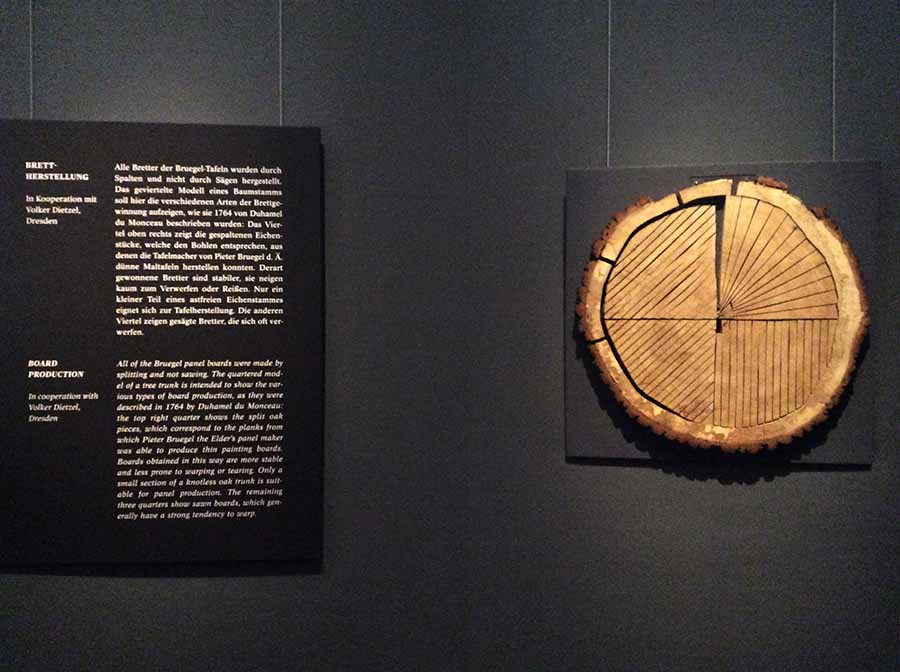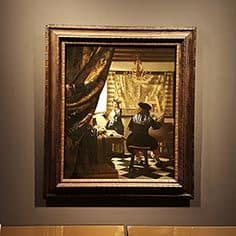Exhibition of Peter Bruegel the Elder at the Vienna Museum of Art History
A chance to understand the nature of talent
The artistic legacy of Peter Bruegel the Elder — from The Big Fish Eating Small to The Hunters in the Snow — must-know for connoisseurs of the deep, puzzling and significant in art.
The exhibition under the motto “Once in a lifetime”
The exhibition project at the Museum of Art History is a global event, as the first museums of the world — the Louvre, The London National Gallery, State Museums of Berlin, the Prado, the Capodimonte Museum — for the first time agreed to add their paintings to those in Vienna. Although it will not be possible to see “all of Breugel”, but two thirds of all the surviving works of the iconic Dutchman under one roof is the sufficient reason to call this exhibition both grandiose and unique.
New technologies and answers to eternal questions
Like any exhibition project that presents well-known works, it places a challenge before curators. Namely: what concept to deliver so that the number of exhibits would not be the only merit of the exhibition. While spectators are attracted by it, experts do not appreciate the number of art pieces along. Since no new documents or works were found recently, the focus is placed on the maximum proximity and moderate interactivity.
For several years, experts have been conducting previously unavailable technological research on an unprecedented scale. In addition to accompanying texts, you will find posters and projections of infrared macrophotography, infrared reflectography, X-radiography in every room. All these accompanying materials should help you find out what exactly makes Bruegel’s works so unique.
The answer to that question is, of course, does not exist. But, as far as the main purpose of exhibitions’ visit is the process of learning itself, it is at least interesting to look at preliminary compositions, repainted scenes, panels mounts and saws of tree trunks of different years.
Even the results of technological research do not answer the question of why Bruegel needed such a super-precise execution, and a step-by-step demonstration of the creation of a painting does not bring us closer to the answer “How to become a great artist?”, all these studies are important because they move us to look at artworks more precise and thoughtfully. In a philosophical mindset, one inevitably begins to polemicize and with the author and with his interpreters.
In the dialogue with the master of riddles
Still, the main thing at any exhibition are original works and in addition to the rhetorical “What did the artist want to say?”, they give ground to think about questions of a less global scale. For example how the drawing The Artist and the Connoisseur contribute to assumptions about the degree of the author’s awareness of the role of the viewer in creating a high status of the creator. And the paintings of the calendar cycle exhibited together, inflame the old discussion about whether we see autumn or spring in The Gloomy Day.
The curators, however, did not forget the more traditional methods. Thus The Triumph of Death is placed in the same room with drawings and engravings depicting seven mortal sins. And here we can speculate why Breugel’s visualization of deep fears may well claim to be the foreshadowing of surrealism. Two towers of Babel are juxtapositioned in a room, which inevitably begs the question “which one is the right one”?
This exhibition is not only a rare opportunity to see Peter Bruegel’s work in a new light. It’s a great chance to ponder different levels of meaning through the masterpieces of a recognized master and an occasion to reflect on why his works are so relevant today.
Practical information:
PS The website Inside Bruegel with the results of technological research — warmly recommended.
PPS The exhibition became a world hit. In three months, it was visited by 440,000 spectators. The museum has repeatedly extended its opening hours and the last week was open until 1 a.m. For those who did not make it to the exhibition, I would like to remind that the largest collection of Peter Bruegel’s paintings is on permanent display at the Vienna Museum of Art History and is available at any time.
You might also find interesting:










